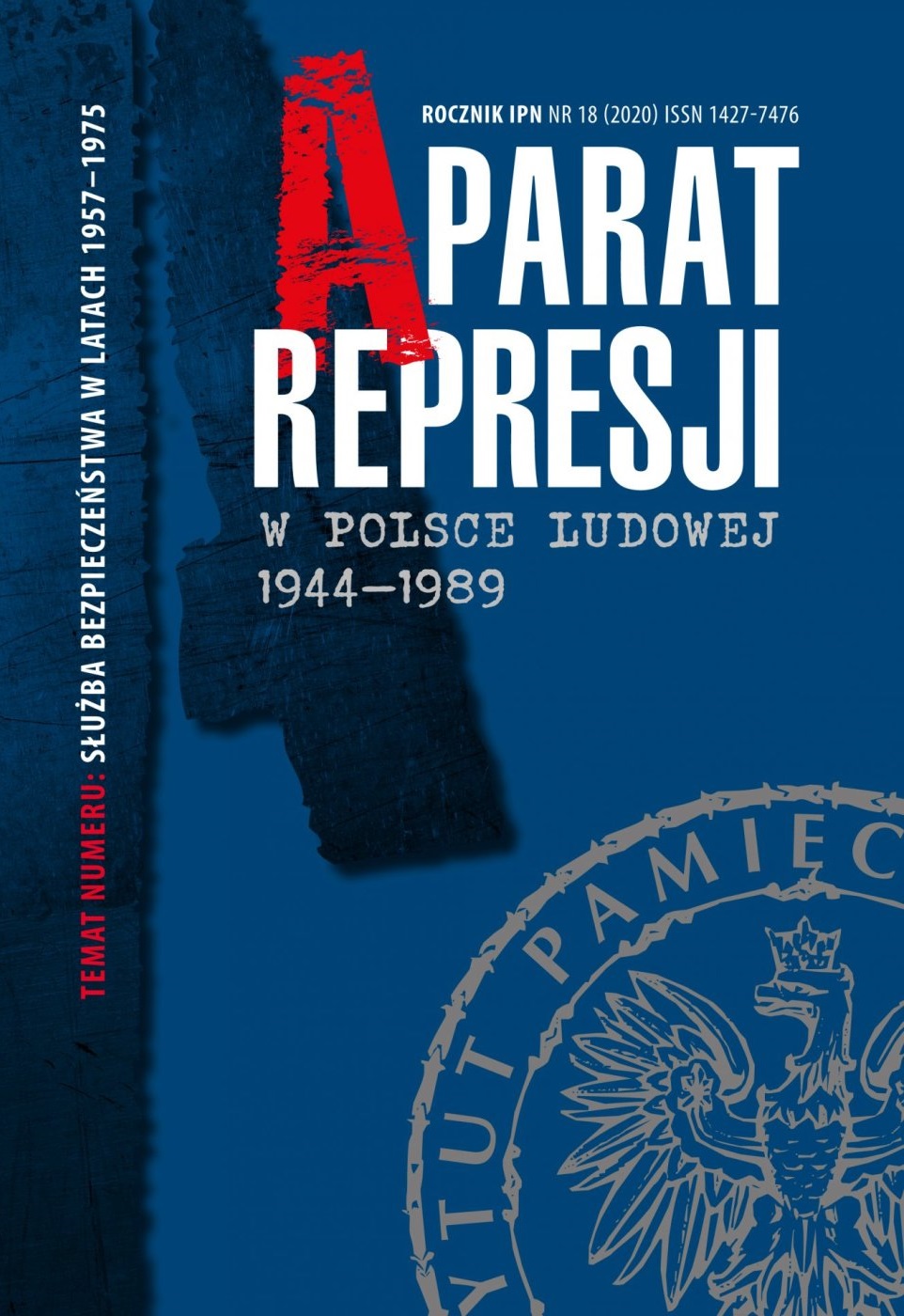A Report from a Clandestine Meeting of Security Chiefs from the Socialist Countries, 7–12 March 1955
Aparat Represji w Polsce Ludowej 1944-1989, No. 18 (2020), pages: 687-713
Publication date: 2023-03-29
 https://doi.org/10.48261/ARPRL201823
https://doi.org/10.48261/ARPRL201823
Abstract
In parallel with the preparations for the establishment of the Warsaw Pact, arrangements were made by the KGB to build closer co-operations between the state security services. On the Soviet side, they aspired to convene a joint meeting as soon as possible, where the intelligence leaders of seven socialist countries could discuss a better organization and management – instead of the looser contacts through ubiquitous Soviet advisers – of intelligence, espionage, radio reconnaissance and operational technology. Following the motions adopted at the meeting, socialist intelligence became more cooperative against the major Western states, within the counter-espionage, offensive intelligence had become dominant. The specific tasks of the intelligence services of each country have also been defined separately, e.g. the reconnaissance of the American emigrant military force became a priority joint task of the Hungarian and Polish intelligence services. An important consequence of the decisions of the Moscow conference was that state security agencies in all participating countries further strengthened their positions within the repressive apparatus, which had serious consequences in the political struggles that soon became critical in some states of the alliance.
This paper is a translation of a publication Jelentés a szo-cialista országok állambiztonsági vezetőinek titkos moszkvai tárgyalásairól, 1955. március 7–12, „Hadtörténelmi közlemények”, no. 114 (2001).
Keywords
wywiad • kontrwywiad • współpraca • zadania specjalne • agentura • nasłuch radiowy • radio intelligence • counter-intelligence • cooperation • special tasks • agent-network • radio reconnaissance • decomposition
References
Magyar Nemzeti Levéltár (Węgierskie Archiwum Narodowe)
Urząd Historyczny, Ministerstwo Spraw Wewnętrznych, Wydział Stosunków Międzynarodowych 1958–1962
Malenkow G.M., Przemówienie na V Sesji Rady Najwyższej ZSRR. 8 sierpnia 1953, Warszawa 1953
„Proponuję wybrać Selepina na szefa KGB”. Z Aleksandrem Selepinem rozmawiał Miklós Kun, „Beszélő”,sierpień–wrzesień 1997
Békés C., Az 1956-os magyar forradalom a világpolitikában, Budapest 1996
Borbándi G., A magyar emigráció életrajza 1945–1968, Budapest 1989
Borhi L., A vasfüggöny mögött, Magyarország nagyhatalmi erőtérben 1945–1968, Budapest 2000
Iratok az igazságszolgáltatás történetéhez, t. 5, Budapest 1996
Kajári E., A magyar Belügyminisztérium szovjet tanácsadói, „Múltunk” 1999, nr 3
Murphy D.E., Kondrasow S.A., Bailey G., A láthatatlan front. A CIA és a KGB háborúja a megosztott Berlinben, Budapest 1998
Okváth I., Bástya a béke frontján. Magyar haderő és katonapolitika 1945–1956, Budapest 1998
Pataki I., „Egyezmények” a szovjet csapatok magyarországi tartózkodásáról, „Múltunk” 1995, nr 3
Rákosi M., Visszaemlékezések 1940–1956, t. 2, Budapest 1997
Urbán K., Magyarország és a Varsói Szerződés létrejötte, „Társadalmi Szemle” 1995, nr 1
License

This work is licensed under a Creative Commons Attribution-NonCommercial-NoDerivatives 4.0 International License.
 Język Polski
Język Polski
 English
English


 PDF (Język Polski)
PDF (Język Polski)
